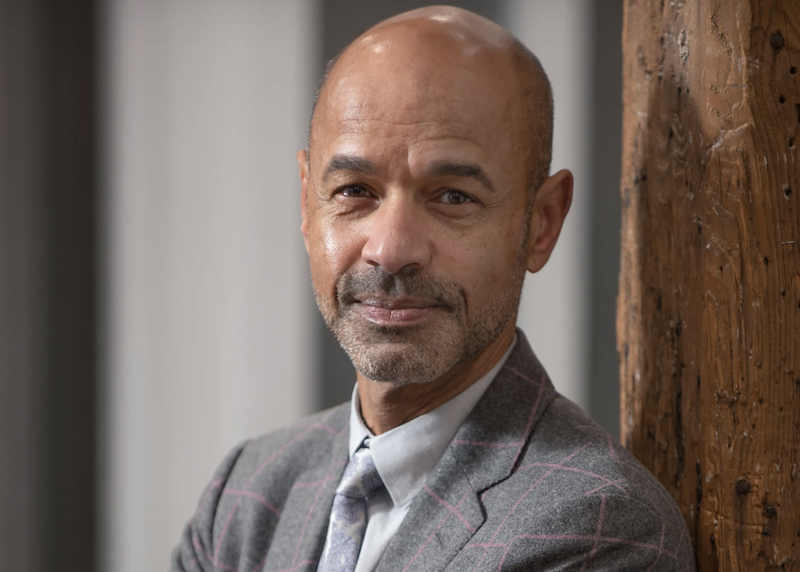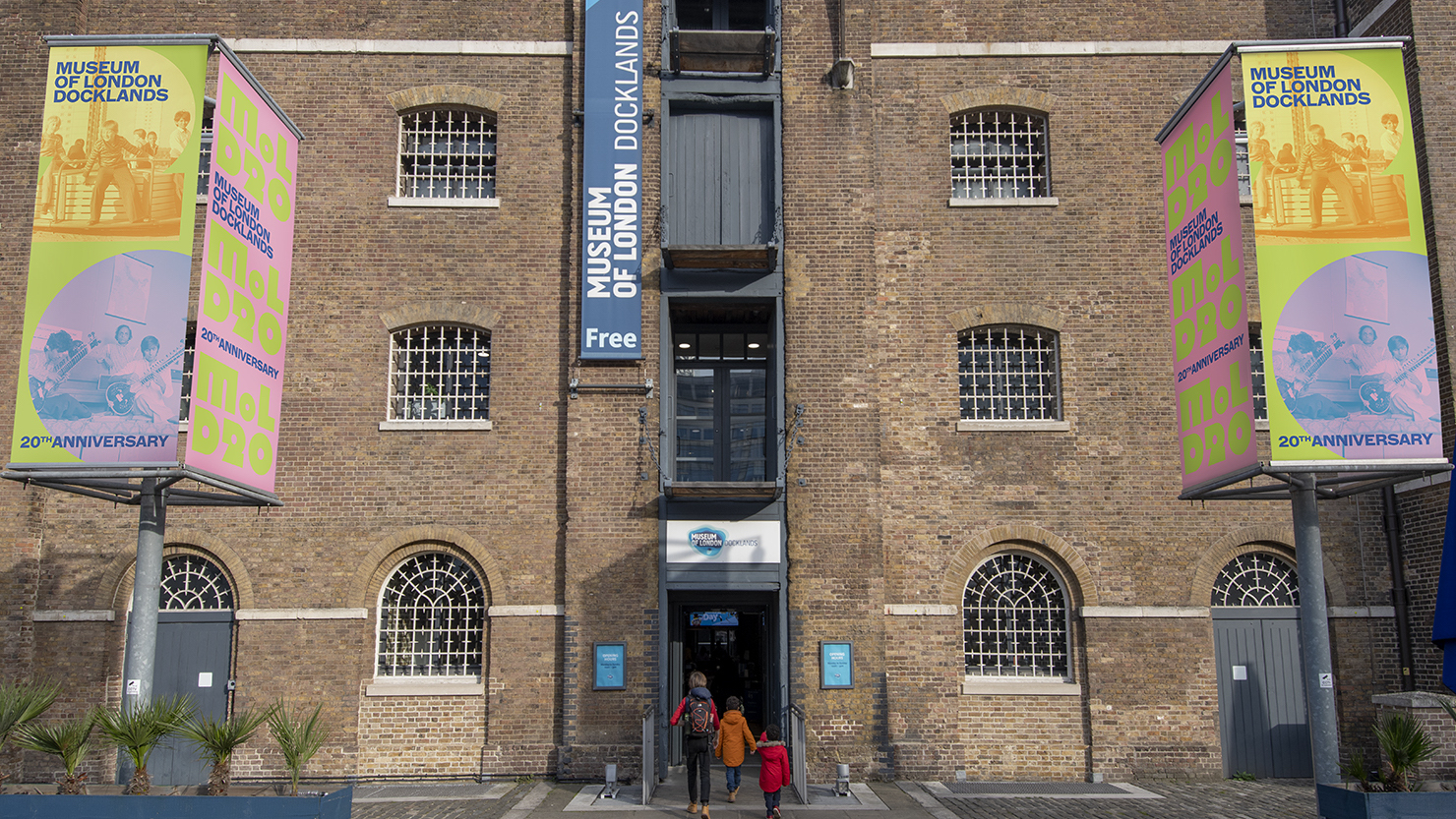Post
Museum of London Docklands: Our exhibitions range from fashion to Jack the Ripper
3 Apr 2024
Douglas Gilmore leads the daily management and strategy for the Docklands museum, working alongside Museum of London Director Sharon Ament and the executive team.
A recognised leader in the culture and heritage sector, Gilmore’s appointment follows roles at the Ashmolean Museum of Art and Archaeology and the National Gallery, where he served as Trading Director of the commercial subsidiary from 2009-2020. He currently sits on the Board of Trustees for Liverpool Biennal and is a Member of the Association and alumnus of the National Youth Theatre. He has previously served on the boards of Bootstrap Charity, WAC Arts, and the Museum of the Home.
Based in the heart of east London in a grade one listed converted Georgian sugar warehouse, the Museum of London Docklands opened in 2003 and tells the story of the port, river and city – focusing on trade, migration and commerce in London. international commerce, migration, enslavement and the history of this part of London. It is home to the London, Sugar & Slavery gallery, one of only three permanent galleries to tell the history of the transatlantic slave trade in the UK.
He took time out of his busy schedule to answer some questions from the London Society.
Do you consider yourself a Londoner?
Absolutely. I have spent more than 43 years in London. This is my home.
Check out our rundown of upcoming events
What’s your earliest art gallery memory?
The iconic London building I remember as a child was the National Gallery. I didn’t really notice the building at that time because I was too young but since then, I’ve worked there (as an executive director at National Gallery Company Ltd). At the age of seven, my mother’s friend, who was an artist, took me to see the Battle of San Romano, painted by Paolo Uccello. It taught me about perspective in paintings. We just looked at the one painting, and then we walked out. To this day, if I go to a museum, my friends ask me why I am going round so quickly.
Do you think some people feel they don’t belong in museums?
The British Museum and Tate Britain are monumental buildings, and that’s probably one of the reasons people sometimes find them intimidating. You need to give people something they really want to see, and people shouldn’t be afraid of coming in and going out, and coming back the next day. Particularly when we’ve got free museums in this country.
What is the purpose of museums?
It’s always been to collect, to have a collection and to preserve it. But also for enjoyment and for learning; whether it’s casual learning for a visitor, or formal learning in terms of research. Museums have to embrace what’s happening in the world in terms of being more diverse, so they have to open themselves to more people in London.
Subscribe to the London Society newsletter
Do you have a vision and goal for the Museum of London Docklands?
Our mission is to enrich the understanding and appreciation of London and all its people past, present and future. We are a place for exploration and for adventure. We see ourselves as a home for all of London stories – and some of London’s stories are not beautiful stories. We’ve had exhibitions about executions and Jack the Ripper.
How can you make museums more inclusive and welcoming for all of London’s communities?
We’re quite lucky here because we are on the quayside. It’s very much a public space with a lot of restaurants with outside seating, and a lot happening in Canary Wharf as well. At the Museum of London Docklands, we have family festivals and they spill outside . In 2023, we had a street party to mark our 20th anniversary. We’re surrounded by four boroughs which are relatively deprived boroughs in London and quite a high ethnic population. We want to represent London which is the most ethnically diverse region in the country – over 40%.
What’s special about the Museum of London Docklands?
We tell the story of the docks and we have one of only three permanent displays to the transatlantic slave trade, and that obviously attracts a diverse community in a bigger way.
What are you doing to bring in the next generation of museum visitors?
We have a children’s play area which brings a lot of people in. On some days, children count for half the audience. So that brings a lot of youngsters in. It’s really important to get them in young and make them feel it’s a place they can come in and have fun. We do a lot with schools. We will reach about 30,000 schoolchildren in any year, and we have programmes built around the school curriculum.
Do you engage with the local area?
We ask the local community what would they like to put on in the museum. This informed our latest display Indo + Caribbean: The creation of a culture (19 May- 19 November 2023). It’s about indentured Indian labour that replaced enslaved people in the Caribbean. I’ve met people that have come to the museum for the first time because they hadn’t seen that story being told before.
The statue of Robert Milligan, a slaveholder was removed from the front of the museum in 2020. What do you think is the best way to deal with controversial figures?
Tower Hamlets local authority did a public survey, and the majority of people wanted it removed. So it was removed, which I think is the right way to deal with that statue at that time. It doesn’t mean it’s the right way to deal with all of them because I think they’re all very different. We have the London, Sugar & Slavery gallery advisory group, with a keen interest in how the history and legacies of transatlantic slavery should be told, and they advise me through our curators.
Is the way we are engaging with history changing?
You should tell the whole story, and the story of not only the slave trade, but of the way dock workers were treated here. There were 200 call-on points at the docks and tickets were thrown on the floor. Dockers would have to scramble to pick them up in order to get work for that day. Workers were treated appallingly.
How do you encourage people to keep coming back to the museum?
By varying your programme and changing the types of exhibitions you put on, you can bring in new audiences. Our latest exhibition is Fashion City: How Jewish Londoners shaped global style (until 7th July). It uncovers the major contribution of Jewish designers in making London an iconic fashion city and you can step inside a traditional tailor’s workshop in the East End, or a Carnaby Street boutique at the height of the Swinging Sixties.

